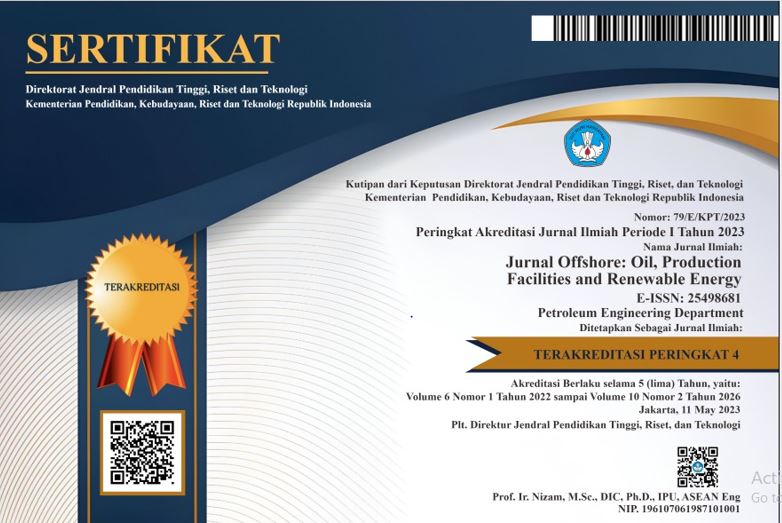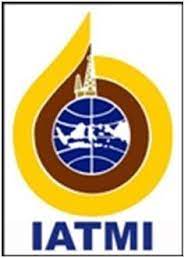Pemanfaatan Sludge Limbah Biodigester untuk Meningkatkan Kecepatan Produksi Biogas dan Konsentrasi Gas Metan dalam Biogas
(1) Environmental Engineering, Universitas Proklamasi 45 Yogyakarta
(*) Corresponding Author
Abstract
Sludge hasil samping pengolahan kotoran sapi menjadi biogas masih mengandung bahan pencemar seperti E. coli, oleh karena itu apabila sludge dibuang langsung ke lingkungan akan menyebabkan pencemaran air, tanah, dan udara. Selama ini sludge hanya dimanfaatkan sebagai pupuk, padahal dalam sludge dimungkinkan masih mengandung mikroorganisme yang dapat mempercepat proses pembentukan biogas. Penelitian ini bertujuan untuk mengetahui pengaruh penambahan sludge biodigester dalam pembentukan biogas dan mengetahui perbandingan optimal komposisi limbah kotoran sapi dengan sludge biodigester sebagai rekomendasi dalam percepatan proses pembentukan biogas. Sludge biodigester merupakan limbah biogas setelah mengalami pengeraman selama 14 hari. Dalam penelitian ini digunakan 3 macam digester dengan variasi komposisi yaitu digester-1 tanpa penambahan sludge biodigester, digester-2 dengan penambahan sludge biodigester sebesar 25%, digester-3 dengan penambahan sludge biodigester sebesar 50%. Volume digester sebesar 30 liter dan waktu pengeraman 14 hari. Parameter pendukung yang diuji meliputi: Volatile Solid (VS), dry content, kadar abu, temperatur, pH isian, komposisi gas. Hasil penelitian menunjukkan bahwa jumlah biogas yang cenderung lebih baik dihasilkan oleh digester-2 dengan bahan campuran 75 % kotoran sapi dan 25 % sludge biodigester. Digester-2 memiliki kadar VS rata-rata 4,62 %, kadar abu 1,82 %, dry content 93,56 %, dengan volume total biogas sebesar 33,4 liter dan kandungan metana rata-rata sebesar 12,19 %. Secara keseluruhan biogas terbentuk pada umur isian 3 hari, dengan rentang suhu 26 °C–30 °C dan pH 6,82–7,44. Penelitian ini memperlihatkan bahwa dengan adanya penambahan sludge biodigester (return sludge) mampu memberikan pengaruh yang lebih baik terhadap produksi biogas jika dibandingkan tanpa adanya penambahan sludge biodigester.
Sludge byproduct of processing cow dung into biogas still contains pollutants such as E. coli, therefore if sludge is discharged directly into the environment it will cause water, soil and air pollution. So far, sludge is only used as fertilizer, whereas in sludge it is possible to still contain microorganisms that can accelerate the process of biogas formation. This study aims to determine the effect of the addition of biodigester sludge in the formation of biogas and determine the optimal comparison of the composition of cow manure with biodigester sludge as a recommendation in accelerating the process of biogas formation. Sludge biodigester is a biogas waste after experiencing incubation for 14 days. In this study used 3 kinds of digesters with variations in composition, namely digester-1 without the addition of biodigester sludge, digester-2 with the addition of biodigester sludge by 25 %, digester-3 with the addition of biodigester sludge by 50 %. The digester volume is 30 liters and the incubation time is 14 days. Supporting parameters tested include: Volatile Solid (VS), dry content, ash content, temperature, pH filled, gas composition. The results showed that the amount of biogas that tends to be better produced by digester-2 with a mixture of 75 % cow dung and 25 % sludge biodigester. Digester-2 has an average VS content of 4.62 %, ash content of 1.82 %, dry content of 93.56 %, with a total biogas volume of 33.4 liters and an average methane content of 12.19 %. Overall biogas is formed at the age of 3 days, with a temperature range of 26 °C-30 °C and a pH of 6.82-7.44. This research shows that the addition of biodigester sludge (return sludge) can provide a better effect on biogas production when compared without the addition of biodigester sludge.
Keywords
Full Text:
PDFReferences
Scientific Panle On Biological Hazards on the Safety Vis-avis Biological Risk of the Mesophilic Process of Biogas and Compost Treatment of Animal By Products (ABPs). The EFSA Journal 465, 1-16
Anonim,http://repository.usu.ac.id/bitstream/123456789/6092/1/09E01445.pdf
Anonim,http://permimalang.wordpress.com/2010/01/06/optimasi-produksi-biogas-dari-limbah-cair-industri-tapioka-sebagai-sumber-energi-alternatif-terbarukan/
Anonim,http://ariffadholi.blogspot.com/2010/04/pembuatan-biogas-dari-limbah-tahu.html
Deublin, P, and Steinhouses, A., 2008. Biogas from Waste and Renewable Resources An Introduction, Wiley-VCH Verlag GmbH, Heidelberg.
Fischer, K. and Krieg, A., 2000, Planning and Construction of Biogas Plants for Solid Waste Digestion in Agriculture, Technical Report of Krieg and Fischer, Goettingen Germany.
Harahap F., M. Apandi, dan S. Ginting, 1978. Teknologi Biogas, Pusat Teknologi Pem-bangunan Institut Teknologi, Bandung.
Hargono, 2004. Pemanfaatan Limbah Jerami sebagai Pakan Ternak dengan Cara Fermen-tasi Menggunakan Starter BMF Biofad (Suatu Upaya Peningkatan Protein Pakan), Jurusan Teknik Kimia, Fakultas Teknik, Universitas Diponegoro, Semarang.
Junus, M., 1987. Teknik Membuat dan Meman-faatkan Unit Gas Bio, Fakultas Peternakan Universitas Brawijaya, Gadjah Mada Univer-sity Press, Yogyakarta.
Miryanti, I., 1980. Biogas di pedesaan, lokakarya Pengembangan Energi Non Konveksional.
Nugroho, B.A. nad Maman Firmansyah, 2006. Skripsi Pembuatan Biogas dari Kotoran Sapi Secara Anaerobik, Teknik Kimia, ITS.
Pambudi A., 2009. Pemanfaatan Biogas Sebagai Sumber enrgi Alternatif, http://www.unsa.ac.id/?p=102 diakses tanggal 6 Januari 2010.
Pramana, D.S., 2007. Studi Literatur Teknologi Anaerobic Digestion Limbah Padat sebagai Penghasil Energi Terbarukan, Tugas Akhir, ITS, Surabaya
Ratnaningsih, Widyatmoko H., Yananto T., 2009. Potensi Pembentukan Biogas pada Proses Biodegradasi Campuran Sampah Organik Segar dan Kotoran sapi dalam Batch Reaktor Anaerob, Universitas Trisakti, Jakarta.
Sasse Ludwig, 1992. Pengembangan Energi Alternatif Biogas dan Pertanian Terpadudi Boyolali - Jawa Tengah, Lembaga Pengem-bangan Teknologi Pedesaan (LPTP), Solo, dan Bremen Overcas Research And Development (BORDA), Jerman.
Simamora, S. et al., 2006. Membuat Biogas Pengganti Bahan Bakar Minyak dan Gas dari Kotoran Ternak, Agromedia Pustaka, Jakarta.
Susilowati E., 2009. Uji Pemanfaatan Cairan Rumen Sapi untuk Meningkatkan Kecepatan Produksi Biogas dan Konsentrasi Gas Metan Dalam Biogas, Program Pasca Sarjana, Universitas Gadjah Mada, Yogyakarta
Suriawiria, U., 2005. Menuai Biogas dari Limbah. Kanisius, Yogyakarta.
DOI: https://doi.org/10.30588/jo.v2i2.404
Article Metrics
Abstract view : 707 timesPDF - 21 times
Refbacks
- There are currently no refbacks.
Copyright (c) 2018 Heni Dwi Kurniasari

This work is licensed under a Creative Commons Attribution 4.0 International License.




.jpg)










.png)